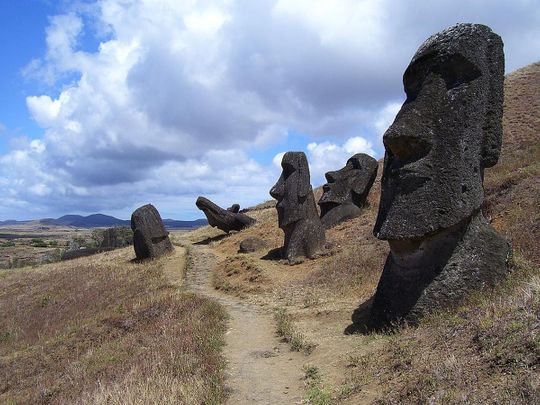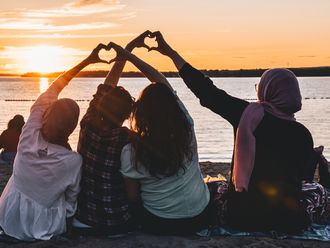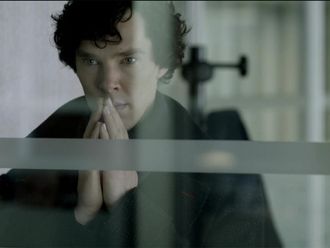
Deep in the Pacific Ocean is a tiny island. When the sun rises, silhouettes form, darken, and become clearer... hundreds of massive statues stand still across the island. As if they were once people turned to stone, they watch, they wait.
Click start to play today’s Crossword, where Easter Island features in one of the clues.
Centuries ago, a small group of Polynesians rowed their wooden canoes across the open sea, navigating by the stars. They found a small, uninhabited island with rolling hills and lush palm trees – it became Rapa Nui, now popularly known as Easter Island.
Another name given to the remote island is thought to be “Te Pito O Te Henua”, or “The World’s Navel”. The comparison isn’t far off – Easter Island ranks in first place on the United Nations’ Isolation Index. Chile is the closest country to the tiny speck in the Pacific Ocean, and it’s still 3,800km away. The only way to get to the island is by plane, as it doesn’t have any harbours.
In the 19th century, French seafarer and artist Pierre Loti described the island in his journal: “There exists in the midst of the great ocean, in a region where nobody goes, a mysterious and isolated island. The island is planted with monstrous great statues, the work of I don’t know what race, today degenerate or vanished; its great remains an enigma.”
The “monstrous great statues” Loti referred to are the moai – nearly 1,000 statues carved out of tuff or volcanic ash, by the natives of the island (also known as Rapa Nui) sometime between 1250 and 1500 AD. Some moai are almost 30 feet tall and weigh 80 tons, and anthropologists are still trying to figure out how people succeeded in transporting the enormous statues across the island’s hilly terrain without wheels, cranes or strong animals at hand.
According to Easter Island’s official tourism website, moai statues were built to honour chieftains or other important people who had passed away. It’s why they were placed on rectangular stone platforms, called ahu, which served as tombs for the people the statues represented.
Another popular theory claims that the moai were created to ward off leprosy, an infectious disease that causes severe skin sores and nerve damage, which was affecting other islands in Polynesia at the time. The Rapa Nui people may have believed the statues reversed the damage, which is why the moai have over-corrected features that are typically the direct opposite of the symptoms of leprosy.
Regardless of their purpose, the Easter Island statues stand as silent witnesses to times past – a mystery that still refuses to give up its secrets, even in the 21st century.
What do you think of the moai? Play today’s Crossword and tell us at games@gulfnews.com.









